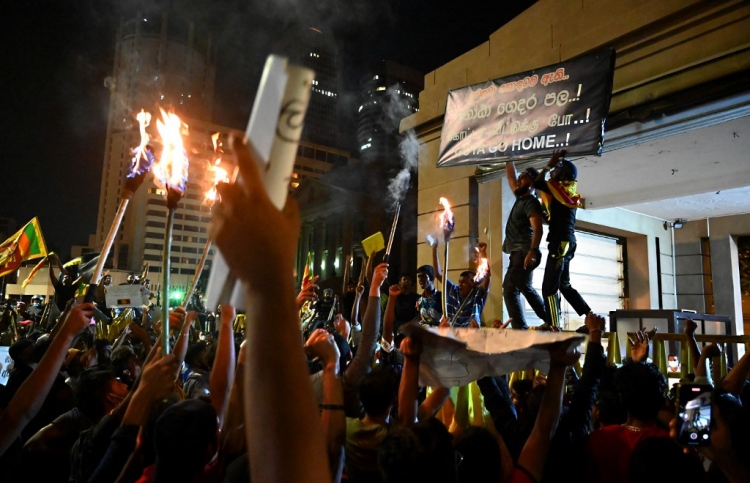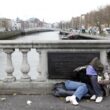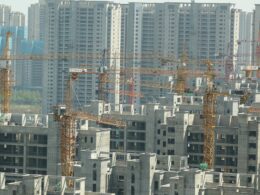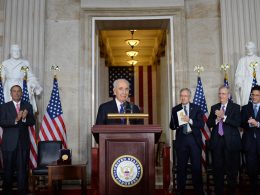By Serge Jordan
Global capitalism is in the midst of growing economic throes and working class resistance. Sri Lanka has been violently propelled to the forefront of both. The words of Karl Marx and Friedrich Engels in the Communist Manifesto that “All that is solid melts into thin air” appropriately describe the rapid turnaround in the political fortune of Gotabaya Rajapaksa ―elected President with 52.25% of the votes at the end of 2019, and now vomited out in the streets across the island. While the ruling coalition was invested in the summer of 2020 with the backing of 59% of the electorate, the first “Mood of the Nation” opinion poll carried out in January this year showed that its approval rating had plummeted to 10%!
General strike
On Thursday, April 28, millions of workers from both the public and private sectors participated in a one-day general strike throughout Sri Lanka, called by nearly 1,000 trade unions, demanding Rajapaksa and his government (headed by his elder brother Mahinda) to step down.
This was not only the first time workers brought life to a standstill since the anti-government protest movement kicked in about a month ago; it was the first nationwide general strike in the country in 42 years. This is no small undertaking in a place that has experienced decades of civil war (which came to a brutal end in 2009), sharp communal polarization and an increasingly authoritarian clampdown. It is all the more significant considering the last general strike in 1980 ended in a severe defeat that impaired the traditions and backbone of the workers’ movement for a generation.
Hundreds of thousands of plantation workers, tens of thousands of workers from the free trade zones factories, public transport workers, teachers, health professionals, bank employees, workers from the ports, fishermen and many others took part in the strike and staged protests in every major city on that day. In many places, small traders showed solidarity with the strike by closing down their shops. Under pressure from their members, even some unions affiliated with the Sri Lanka Podujana Peramuna (SLPP, or Sri Lanka’s People’s Front ― Rajapaksa’s ruling party), were left with no choice but to endorse the strike.
Economic collapse
Last Thursday’s general strike opened a new chapter in the weeks-long popular revolt that has shaken the island. Driven by young people, thousands have been camping on Galle Face Green, the front of the President’s Office in the capital Colombo since April 9, demanding “Gota” and his regime to go. This occupation has large public support and has been echoed by multiple demonstrations, rallies, street occupations and the attempted storming of the homes of more than a dozen government figures, as a majority of the population is fuming with anger over the increasingly unbearable conditions of life. This anger is particularly directed at the ruling Rajapaksa family, which has dominated Sri Lanka’s state institutions for most of the last two decades, and is largely perceived as the chief responsible for the country’s economic collapse ― the worst in its entire post-independence history.
According to Professor Steve Hanke, an economist at the Johns Hopkins University in the United States, Sri Lanka has now the third highest inflation in the world behind Zimbabwe and Lebanon. While the cronies around Rajapaksa’s clique have sustained lavish lifestyles by siphoning off large amounts of public money, tens of thousands of people are coping with job losses and drastic income cuts. Many have fainted and even died after standing for hours if not days under scorching heat in long queues to secure basic means of existence for their families. Widespread shortages of food, fuel and pharmaceuticals, and extended power cuts lasting up to 13 hours a day are now the lot of all but a few.
On Saturday, April 30, the government announced another 40% price hike for sixty commonly used medicines ― including antibiotics, non-prescription painkillers and medications for heart conditions and diabetes. Doctors have warned that a catastrophic number of people could die as the healthcare system is on the verge of collapse, the Sri Lanka Medical Association predicting a number of deaths “likely to be in excess of the combined death toll of Covid, tsunami and the civil war” if nothing is done about it.
How did this happen?
Sri Lanka’s economic crisis has been brewing for a while. The formal economic growth experienced over the last decade was founded on a huge debt spree. Foreign debt more than doubled between 2010 and 2020, a significant portion of which is owed to China (now the second-largest lender to Sri Lanka) but also to Western banks, financial institutions and speculative hedge funds. Rapid money was made by international creditors and by a handful of corrupt high-ranked officials and domestic private companies through a series of debt-fuelled megaprojects of little use to the broader public. At the same time, genuine and much-needed infrastructure development was forsaken, most critically so in the predominantly Tamil north and east, where the populations’ only interaction with the state has been through militarisation rampages and chauvinist-driven campaigns of harassment, land eviction and other suppression of rights.
In recent years, close to 90% of new debt taken on by the government was used to pay back interest on outstanding loans accumulated previously. Wealthy segments of society and private corporations were also afforded generous tax cuts, earning Sri Lanka the tag of a country with one of the lowest tax regimes in the world. While the country’s finances were reeling from a long-lasting war that cost an estimated $US 200 billion, the government continued to throw over 10% of its budget at the military, almost twice the world’s average ― and even more than during the heights of the civil war itself.
The global Covid-19 pandemic was a serious blow to Sri Lanka’s economy, negatively affecting its exports, the remittances from Sri Lankans working abroad and especially tourist revenues — which had already taken a hit after the 2019 Easter terrorist bomb blasts that killed more than 250 people. Then came the war in Ukraine that exacerbated the surge of food and fuel import prices, and the tightening of borrowing conditions on international markets ― fast-tracking the country to its current point of meltdown and bankruptcy.
On April 12, following a wave of denial by Central Bank officials, the country defaulted on its $51 billion foreign debts. After having sought emergency funds from China, India and other regional lenders, the government embarked on talks with the International Monetary Fund (IMF) to secure a bailout package. The IMF made clear that in exchange, Sri Lanka would need to undertake “fiscal consolidation” ― a fine expression to mean that a new heavy dose of austerity (removal of subsidies, cuts in social expenditure, currency devaluation, privatizations etc) would have to be shoved down people’s throats.
Sajith Premadasa, the leader of the main parliamentary opposition Samagi Jana Balawegaya party (SJB, United People’s Power), ushered the term “extreme austerity” to describe what the population needs to swallow. This helped clarify that any government involving the current opposition would bring no fundamental difference to the fate currently endured by millions of Sri Lankans. The SJB, as is the case with other opposition parties arguing for an “interim administration” like the arguably left, Sinhala-nationalist Janatha Vimukthi Peramuna (JVP, People’s Liberation Front) and any government they might be called on to form or participate in, would welcome rather than challenge the IMF agenda ― something which their past record already demonstrates.
As a meme on Twitter reads, “Gota go home, Sajith stay home, Anura do not even think about it” — referring to the current President, and the main leaders of the two above-mentioned opposition parties. This eloquently captures the point that the most prominent political opposition has no actual alternative to counter the current administration’s, apart from more of the same. At any rate, regardless of who is administering these bitter pills, doing so in the very midst of record surges in prices, widespread shortages and deep popular rage against the establishment is a sure lead to an even more explosive social scenario, and to a deepening of the political imbroglio at the top of the State.
Political crisis escalates
The protest and strike movement has pushed the Rajapaksa’s government off balance. In early April the entire cabinet bar the Prime Minister resigned. This move did nothing to assuage mass public anger, only making the calls for the Rajapaksa brothers to go home louder and more determined than before.
The reshuffled government is now hanging on a thread: the two-thirds “supermajority” secured by the ruling party in the 2020 parliamentary elections has frittered away, and previous partners have pulled out from the ruling coalition, which now has less than 113 members’ support in the 225-member House. Cracks have been rising within the ruling party, with a series of defections and several senior leaders and legislators calling for the Rajapaksas to be replaced. In a late development, Gotabaya has publicly declared he was ready to sacrifice his brother Mahinda as Prime Minister — bringing the inner feuds of the ruling class to the heart of the ruling family itself.
Lately, too, the Sri Lankan bourgeoisie has started weighing in, expressing its growing unease with the heads of the regime. Reporting on the public “support” recently given to the protest movement by the country’s largest listed company John Keells Holdings, the largest private sector employer MAS Holdings, and the Joint Chambers of Commerce and Industry, ‘The Hindu’ commented that “Increasingly, prominent capitalists and big businesses are shedding their habitual caution and openly criticising the political impasse that is further threatening the country’s crashing economy.” Despite Gota’s adamant stance that he will not budge, his capitalist friends appear increasingly tempted to throw him under the bus.
This does not come from genuine consideration for the people of Sri Lanka of course, but from a realization that the Rajapaksas have become a liability and that their hold onto power could spark a wider uprising. The historic crisis and ensuing social revolt have deeply eroded the support for the Rajapaksa regime indeed ― especially from the Sinhala Buddhist majority, who constituted a majority of its voter base.
On April 19, a 42 year-old father of two was shot dead as the police fired 35 rounds of live ammunition into a fuel shortage protest in Rambukkana, a small town northeast of Colombo. The district where this man lived is an area where the SLPP had secured close to 70% of the votes less than two years ago. There, as in many predominantly Sinhalese neighborhoods, the mood has dramatically shifted against the corrupt clique in power.
Protests have broken out in traditional electoral strongholds of the Rajapaksas, including outside the prime minister’s private residence in Tangalle. Other cities with majority Sinhalese populations, such as Galle, Matara and Moratuwa, also witnessed large demonstrations. The same voters that had enabled Gotabaya’s landslide presidential win in 2019 are now in the streets demanding his ousting. The rural heartland with its Sinhala peasantry, a traditional social base of the regime, has also been alienated by the government’s sudden and ill-conceived ban on chemical fertilizers last year, which severely impacted agricultural production and devastated farmers’ income. The ban, introduced without any plan aimed at preparing the transition to organic fertilisers, was partially reversed in November following months of mass protests by the farmers, but the paddy harvest never recovered. This also played a part in the making up of the country’s food crisis.
Communalism challenged
As is always the case, the most divisive elements tend to be subdued when class questions come to the fore. The ongoing movement of resistance, and most particularly the general strike which has dragged significant layers of Tamil, Muslim and Christian strikers into a common show of working class strength, have revealed the potential to build a struggle uniting all those suffering under the present reactionary rule of the Rajapaksas. On Galle Face Green, renamed “Gota go gama” (= “Gota go village”), protesters of different faiths and ethnic background congregate, and space and facilities have been provided for Muslims to end their fast of Ramadan. The deep-seated communal fractures, which have been weaponised for so long by the capitalist elites of Sri Lanka to keep the masses in check, can be gapped. By its intervention, the union and workers’ movement has already demonstrated it has a decisive role to play in making this happen.
The myth of stability and security upheld by Sinhalese supremacy and nationalism has taken a hit. Sharing the same enemy, experiencing themselves growing economic deprivation as well as the violence of the State machine ―although on a scale that has no remote comparison with the genocidal violence unleashed against the Tamils― the Sinhalese workers and impoverished middle class can start seeing the commonality of interests with the nationally oppressed and economically depressed Tamil people.
After decades of bloodshed, suspicions between communities continue to run high though, and an understandable mixture of fear, hesitation and skepticism among sections of the Tamil minority in fully engaging with the current protest movement ―stronger in the Sinhala-dominated southern districts― lingers on. The inclusive approach and diverse ethnic and religious make-up displayed in the protests so far, while a step in the right direction, is ultimately insufficient to build a lasting, united and countrywide movement powerful enough to dethrone the regime and the bloody foundations upon which it rests. It certainly will not be enough to conjure up for good the specter of communal divisions and violence, which various sections of the ruling class could be tempted to foment to push the mass movement off the rails.
Getting there will require espousing a program that not only unites working people and poor from across communities on the burning economic questions of the day, but also boldly demands the repeal of all discriminatory and oppressive laws and policies, claims justice and reparations for all the regime’s war atrocities against the Tamils, and upholds the rights of all ethnic and religious minorities ― including the uncompromising right of the Tamil people to genuine self-determination. For their part, the latter would be among the first to suffer from the perpetuation of the present regime, and should seize the current revolt as an opportunity to amplify their demands for justice and accountability, and for an end to their long-endured national oppression.
What now?
In the last weeks or so, the center of gravity of political developments in Sri Lanka has decisively moved onto the streets. The general strike has shown the working class’ readiness for decisive action to move against this rotten regime ― but not only that: it has also shown a small glimpse of workers’ potential to organise society differently. For instance, as electricity workers went on strike, they did not implement the daily power cuts the population of Sri Lanka has had to suffer from on every other day of the week. In other words, the only time there was no extended power cuts was when electricity workers were in charge! What a fantastic example of workers’ inner sense of human solidarity ― and a demonstrative example of capitalism’s abject failure.
Now is the time to put this potential into decisive action. The workers, poor farmers, students and youth need to take matters into their own hands, forming local committees of action everywhere, to prepare for the next steps in what will be an enduring and difficult struggle. Such committees could also help in controlling prices, preventing hoarding and organizing the supply of vital goods to those in need.
In a welcome move, some unions have threatened to launch a ‘Hartal’ (all-out strike) from May 6 if the president and the government do not resign. But even if the corrupt mafia of the Rajapaksas was to leave the stage ― and considering what is at stake for them, including potential trials for war crimes and corruption, they will not do so without fighting to the bitter end― the economic system and state structures they have presided over would still remain in place.
Besides, Sri Lanka is nothing but a weak link in the chain of crises provoked by capitalism around the world. Its fate is inextricably connected to global events. The geostrategic “tug-of-war” between China, the US and its regional ally India over the future of the island is a manifestation of this. The Chinese regime was able to gain an increased economic and political foothold in the country over the last decade, handsomely paid back for its military support for the Sri Lankan state’s onslaught against the Tamils during the civil war. In parallel, the US administration leveraged “human rights” issues and the past war crimes of the Rajapaksa regime to try and keep its own influence going over the country’s rulers. An end to the Rajapaska era would further incite the jostling for influence between the competing imperialist powers, and the pressures on the Sri Lankan ruling class to “pick a side” in this new ‘Cold War’.
Hence it is clear that the masses will need far more than a “change of guard” at the top to bring an end to the barbaric conditions they have been plunged into. The movement’s demands have to go beyond the overthrow of the current ruling line-up, and strive for a fundamental overhaul of society for the benefits of the island’s exploited and oppressed masses. In doing so they will need the strongest international solidarity and support from their class brothers and sisters fighting exploitation and political tyranny in India, China, and the rest of the world.
The fight for democratic rights, which have been under mounting assault during the Rajapaksas’ reign, is a critical part of this struggle. It should encompass the abolition of the autocratic system of “executive presidency”, the scrapping of the current, undemocratic constitution and the elections of a revolutionary constituent assembly democratically elected from across all the diverse sections of the population.
An emergency economic plan of action, based on the largest possible mobilisation of the working class, needs also be undertaken to confront the spreading problems of shortages and hunger. To do that however, the masses in Sri Lanka will find there is no other way than to prepare and organize for a revolutionary struggle that can break the capitalist and imperialist deadlock over the country’s resources. According to the World Inequality Database, in 2021 the richest 10% of Sri Lankan society held 63.8% of the island’s total wealth while the bottom 50% held a mere 4.3%. There is thus no reason whatsoever for the poor to shoulder this crisis. The movement should demand the unconditional repudiation of the country’s foreign debt, the rejection of any agreement with the IMF and of all austerity measures, the immediate seizing of all the properties and assets of the Rajapaksa dynasty and its cronies, public control on foreign trade and capital flows, and the nationalization under workers’ control of the main industries, banks, and large land estates. These measures would lay the foundational stones towards the democratic planning of the economy and the socialist transformation of the island, and usher in the basis to secure a dignified existence to its 22 million inhabitants.












